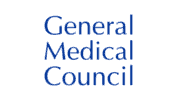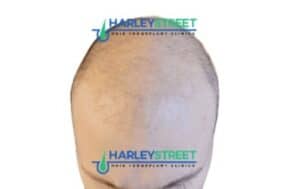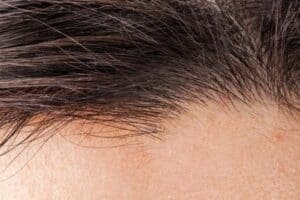If you’re experiencing hair loss and are considering a hair transplant, then you have probably heard hair transplant clinics reference the “donor area”. But what is a “donor area”? On this page, you will find everything you need to know about donor areas and donor hair: what it is, where it’s located, and how we make sure your donor area is suitable for hair transplantation.
What is the Donor Area?
Simply put, the donor area is a region of the scalp or body where hair follicles are harvested from during a hair transplant. These hair follicles from the donor area are implanted into the recipient area (the area where a patient is suffering from hair loss.
In most cases, the donor area is the back and sides of the scalp, as these areas are genetically resistant to the hormone dihydrotestosterone (DHT), which is responsible for hair loss. For a “successful” hair transplant procedure to take place, the aim is to take enough grafts from the donor area to cover the recipient area without over-harvesting the donor site.
The most common method of harvesting hair follicles from the donor area is through a technique called Follicular Unit Extraction (FUE) or Follicular Unit Transplantation (FUT). In FUE, individual hair follicles are extracted one by one using a small punch tool. In FUT, a strip of tissue containing hair follicles is surgically removed from the donor area, and then the individual follicular units are dissected for transplantation.
It’s important to note that the choice of donor area and the method of extraction can vary depending on the patient’s specific circumstances, the surgeon’s preference, and the desired outcome of the hair transplant.
Can You Lose Hair In Your Donor Area?
Hair loss in the donor area is a rare phenomenon for men and women. Typically, in cases of male pattern baldness and female pattern baldness, hair loss affects the hairline and crown in men and the mid-parting area in women. The donor area usually remains unaffected.
In extreme cases of male pattern baldness (stages 6 to 7 on the Hamilton-Norwood Scale), a condition called “retrograde alopecia” may occur. This is where donor hair follicles may miniaturise, leading to an insufficient number of donor hair being available for surgery.
Some people may even suffer from a condition called alopecia areata. This is an autoimmune condition where hair loss can sometimes occur in the donor area in the size of a 10p to 50p piece. If you suffer from alopecia areata in your donor area, you may still be eligible for a hair transplant.
It is important to state that donor hair loss is a fairly rare occurrence in men and women. So, if you think you may be suffering from hair loss in the donor area, don’t hesitate to book yourself in for a free consultation.
What Constitutes a “Good” Donor Area and “Healthy” Hair Follicles?
A “good” or “healthy” is usually determined by how thick and full the area looks to the eye. The more hair follicles there are on the back and sides of the head, the better your hair transplant result is going to look and it is less likely to be visible from the back that you have had surgery.
In most individuals, there are usually around 6,000 hair grafts in the donor area that can be used for transplantation. To give this some context, hairline surgeries usually require between 1,500 and 2,000 grafts and mid-stage hairline and crown surgeries require between 3,000 and 3,500 follicular units.
So, 6,000 hair grafts do leave plenty of room for hair follicles to be taken during surgery and, in some cases, even allow a second surgery (or two-stage procedure) to take place. However, with any hair transplant, the key is to strike a fine balance between harvesting enough donor hair for surgery and leaving enough scalp hair on the back of the head for a natural-looking result.
Can Beard and Body Hair Be a Part of the Donor Area?
In extreme cases, beard hair and body hair can be used during a hair transplant procedure. However, it is important to state that this is extremely rare and is only ever to be used in the most severe cases of hair loss.
Beard and chest hair should only ever be used in cases where there is not enough natural hair in the donor area for hair transplantation.
At Harley Street Hair Transplant Clinics, we do not consider beard and body hair as suitable hair for hair transplant surgery. This is because the hair looks visibly different to the hair follicles found in the donor area.
Transplanted hair should always blend seamlessly into existing hair on the top/front of the head, and not look any different to what was there in the first place. As stated earlier, the aim of a hair transplant is to provide a real-looking and natural result.
In cases where patients are considering donor hair from their beard and body, they have usually been turned away by other clinics as the back and sides of their head do not contain enough hair grafts to provide a good-looking result. In these instances, bald patients should consider hair restoration alternatives such as wigs or toupés.
Hair Transplant Surgery and the Donor Area
Before a hair transplant surgery can take place, the most important factors in determining the eligibility of a case are the size and suitability of the donor area. If a patient has enough hair grafts of a suitable size and quality, then a hair transplant will always get the green light!
But what are the common questions we get asked about the hair transplant donor area? Well, we have listed many of these common questions below, so you’re in the know about the hair transplant donor area!
Do I Need to Shave My Donor Area Before Surgery?
Yes! For a DHI and FUE hair transplant surgery, patients are required to shave the back and sides of their head before surgery can take place. There are two main reasons for this: uniformity of the donor follicles and ease of extraction.
First, shaving the donor area ensures a uniform appearance of the hair follicles. Having each hair follicle the same length makes it easier for the hair transplant surgeon to visualise and access each donor hair during the extraction process. This uniformity facilitates precision and accuracy during the hair transplant process.
Shaving the donor area also provides a clear field for the hair transplant surgeon to correctly identify and extract each follicular unit individually. One uniform length of hair follicle (usually a clipper grade 1) minimises the risk of damaging surrounding hairs during the extraction phase.
How is Donor Hair Extracted During a Hair Transplant Procedure?
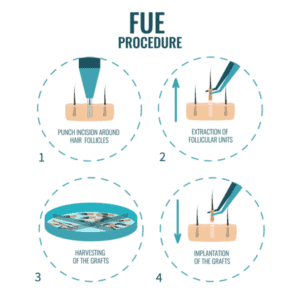
When it comes to donor area extraction, there are two philosophies in hair transplant methodology: individual extraction (FUE and DHI) and strip excision (FUT). Both approaches involve harvesting hair follicles from the donor area for transplantation to areas with hair loss.
Follicular Unit Extraction (FUE) and Direct Hair Implantation (DHI)
During FUE or DHI, individual hair follicles are extracted directly from the donor area using a small, cylindrical punch tool. Each punch typically ranges from 0.7 to 1.0 millimetres in diameter. DHI usually uses slightly smaller punch tools than FUE, but the difference in result and recovery time is often marginal.
As for the process, the surgeon manually extracts individual follicular units by making tiny incisions around each follicular unit. These units are then carefully removed, one by one, leaving small openings in the donor area. These usually scab over quickly and are fully healed within 10-14 days.
The main advantage of using FUE and DHI is that it is minimally invasive in nature. These methods do not leave any linear scar (as in FUT) on the donor area, enabling a quicker recovery time. It is suitable for those who prefer to keep their hair short as the extraction sites are less noticeable.
Follicular Unit Transplantation (FUT):
During FUT, sometimes called “strip surgery”, a long strip of tissue containing hair follicles is surgically removed from the donor area (typically the back or sides of the scalp). hair follicles are then removed from this strip of skin and implanted into the recipient area.
One of the main advantages of FUT is that it allows a larger number of grafts to be extracted in a single session, compared to DHI and FUE hair transplant surgeries. However, this does leave a linear scar at the donor site, which can be hidden by surrounding hair if the person’s hair is long enough.
For patients who do not wish to shave their heads, or would prefer to have long hair, then FUT hair transplant surgery can be recommended. For this reason, FUT is often more popular with female and transgender hair transplant patients.
What Will My Donor Area Look Like After Hair Transplant Surgery?
After your hair transplant, your donor area will look different in the immediate aftermath. Once your recovery is complete, the difference in look pre- and post- hair transplant is very difficult to see.
During the Recovery Period

After a DHI or FUE procedure, small scabs or red dots may be visible in the donor area. These are the sites where individual hair follicles were extracted from the donor area.
This is usually nothing to worry about! The scabs in the donor area typically heal and fall off within the first week or two. That’s why we always give patients a 10-14 day initial recovery period.
After the Recovery Period
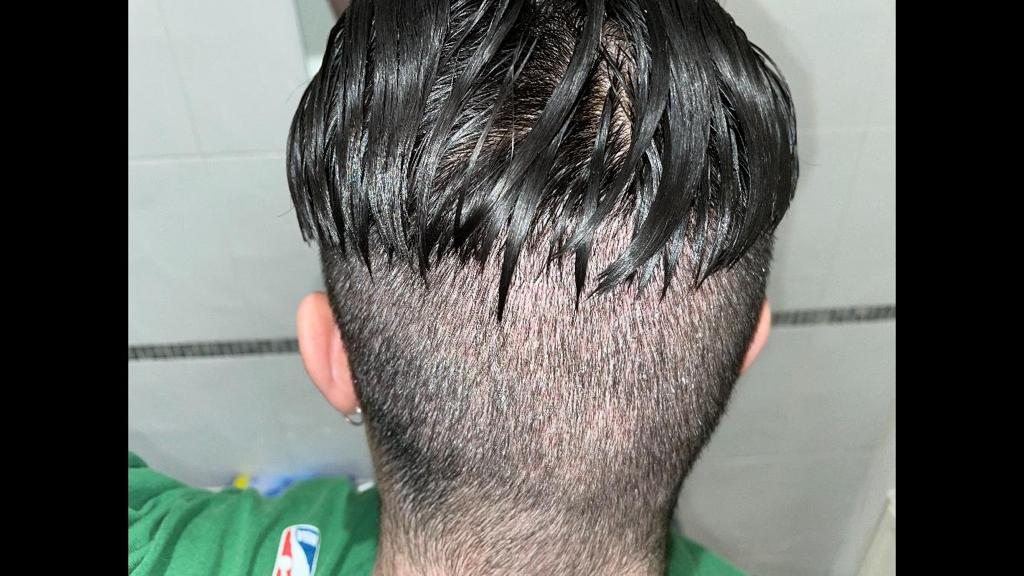
After the initial recovery period and your hair transplant donor area has healed, the “look” of the area is going to depend upon how many grafts were used during surgery. As hairs are moved from one area of the head to another, some depletion in the donor area will occur.
For patients who have removed anywhere up to 2,500 grafts, the depletion of the donor area will not be noticeable at all. However, for patients who have larger cases, some thinning of the donor area may be visible. This is something that needs to be considered before surgery takes place.
Does Hair on the Donor Area Grow Back After a Hair Transplant?
Unfortunately, the hair in the donor area is not inexhaustible. This means that the number of donor hairs you have in your donor area is finite and they will not grow back in the donor area once they have been transplanted.
This is why we say that hair transplants are often a fine balancing act between the number of grafts we can feasibly take for surgery, whilst also leaving the donor region without over-harvesting. The absolute key to a full donor area recovery is not to over-harvest the area, leaving it thick and full to the untrained eye.
Conclusion
The donor area is an area located on the back and sides of the head. If a patient has a thick and full donor area, then this makes them eligible for a hair transplant. However, hair transplant surgery does not come without its compromises and this is why it is important to have your surgery led by an experienced hair transplant surgeon.
Having an experienced hair transplant surgeon ensures that your surgery will not result in an over harvested donor area. So, having a thick and full donor area for hair transplant surgery is great! But be sure to do your research wisely when choosing a hair transplant clinic as you only have a finite number of good quality grafts.


